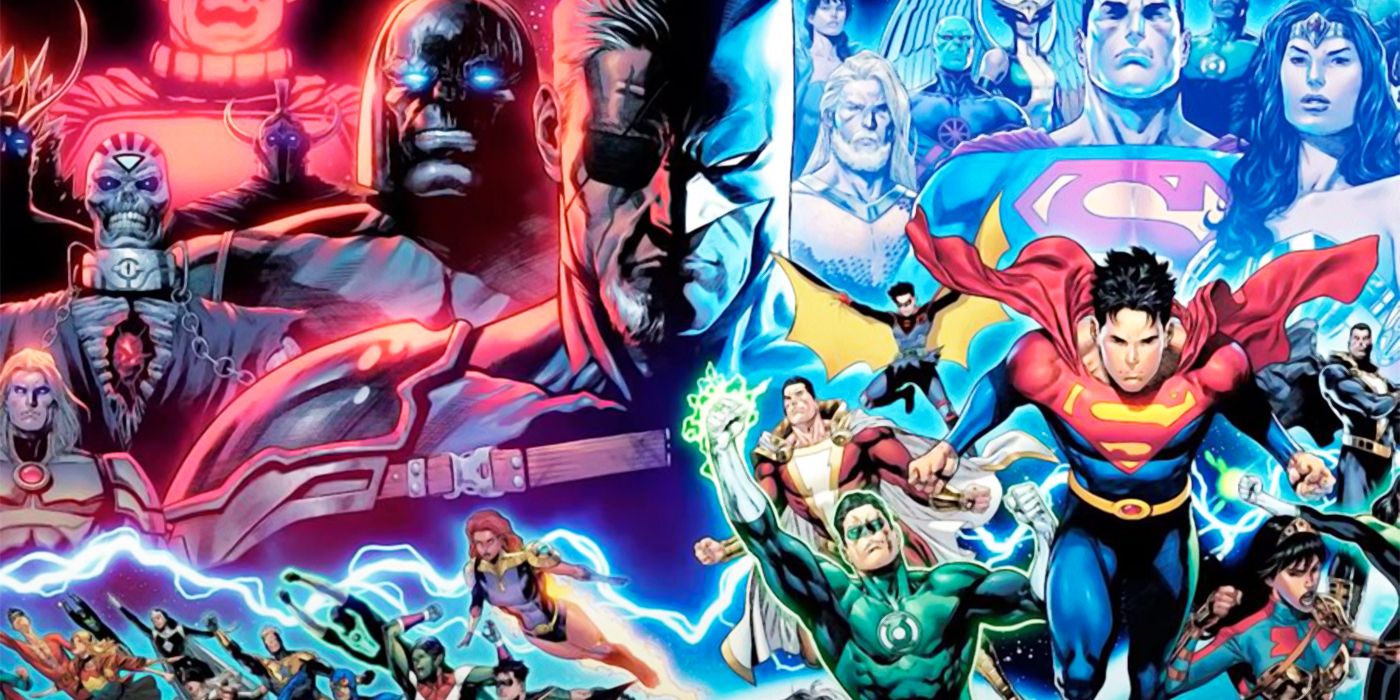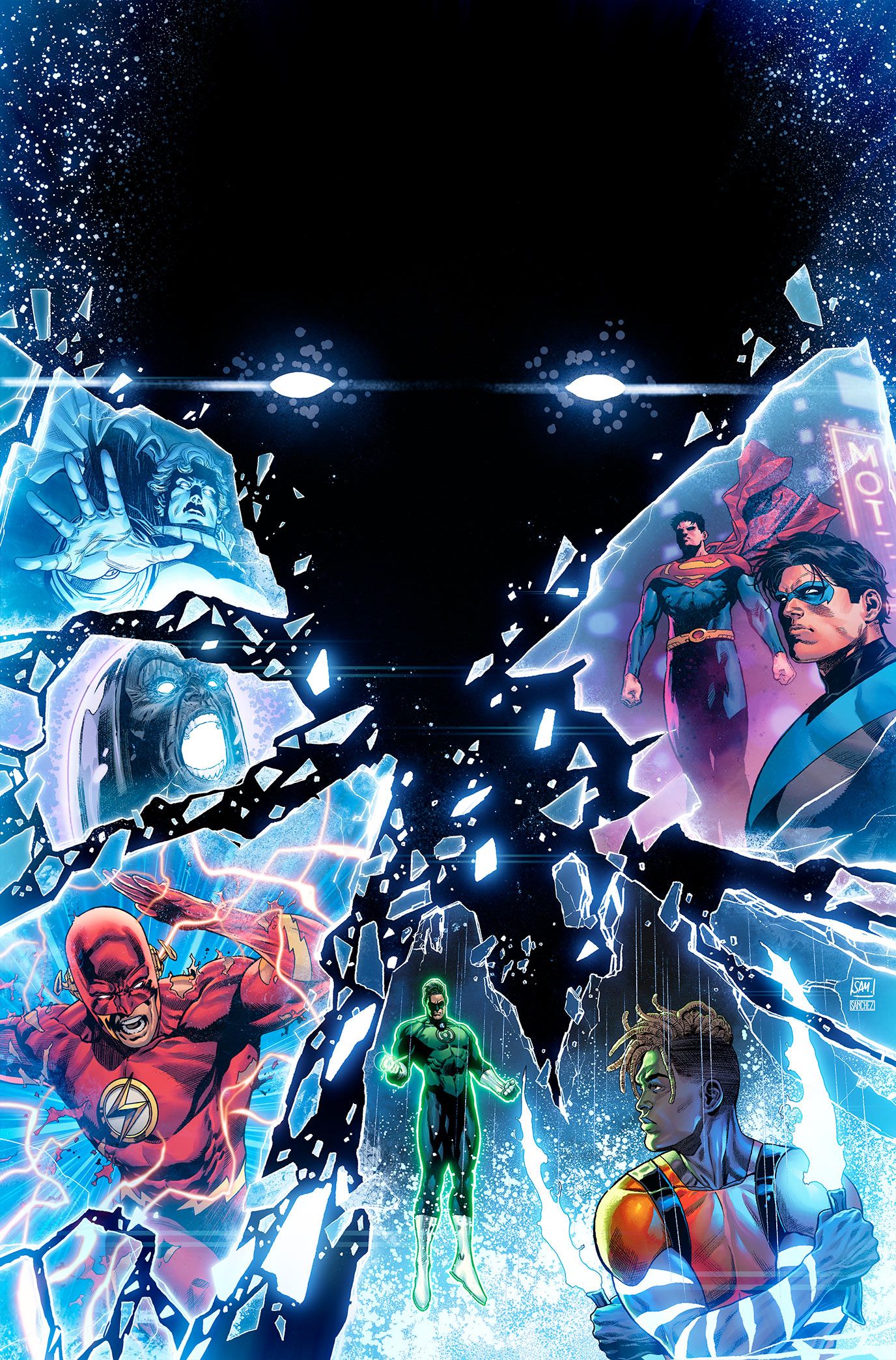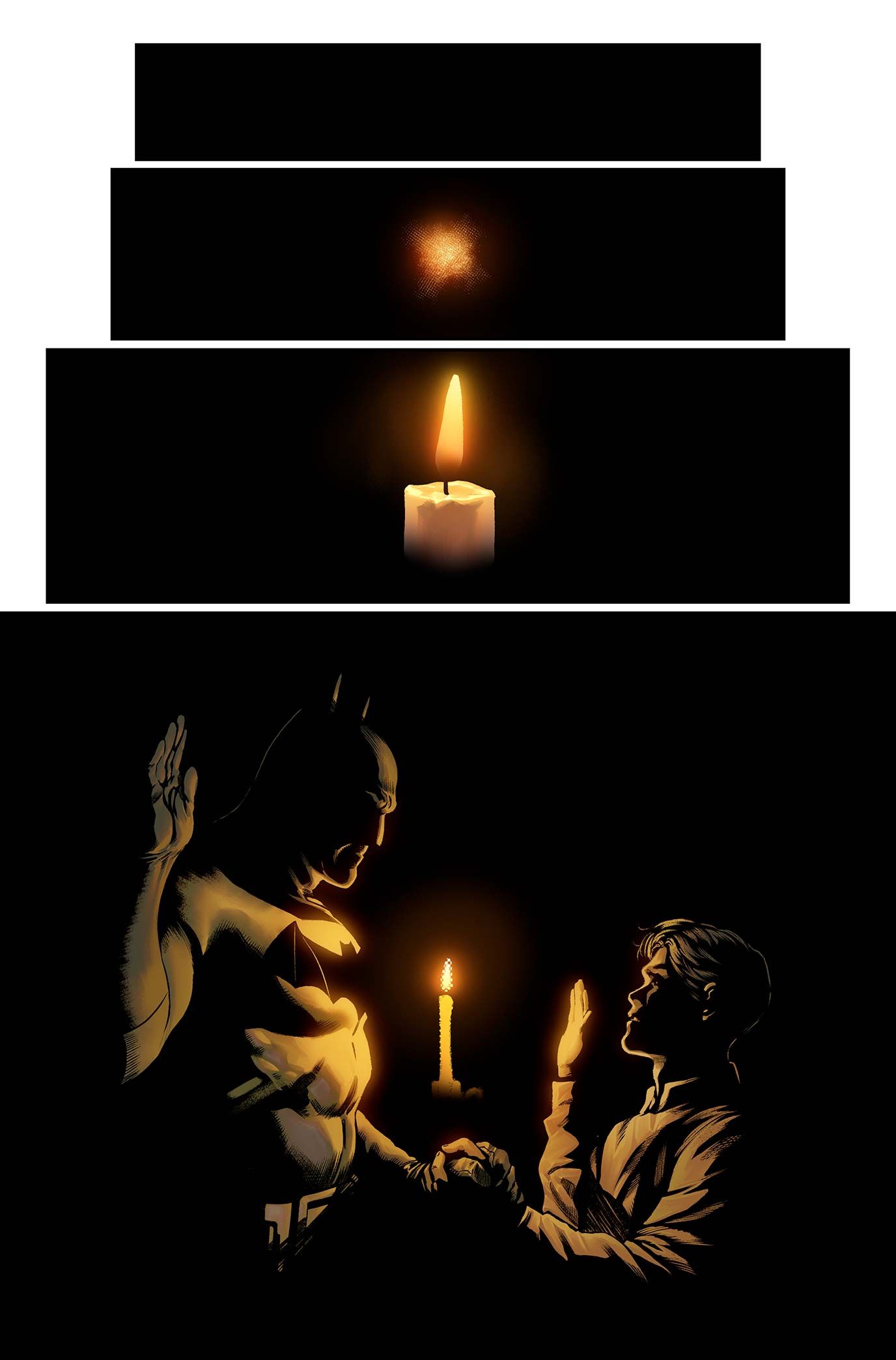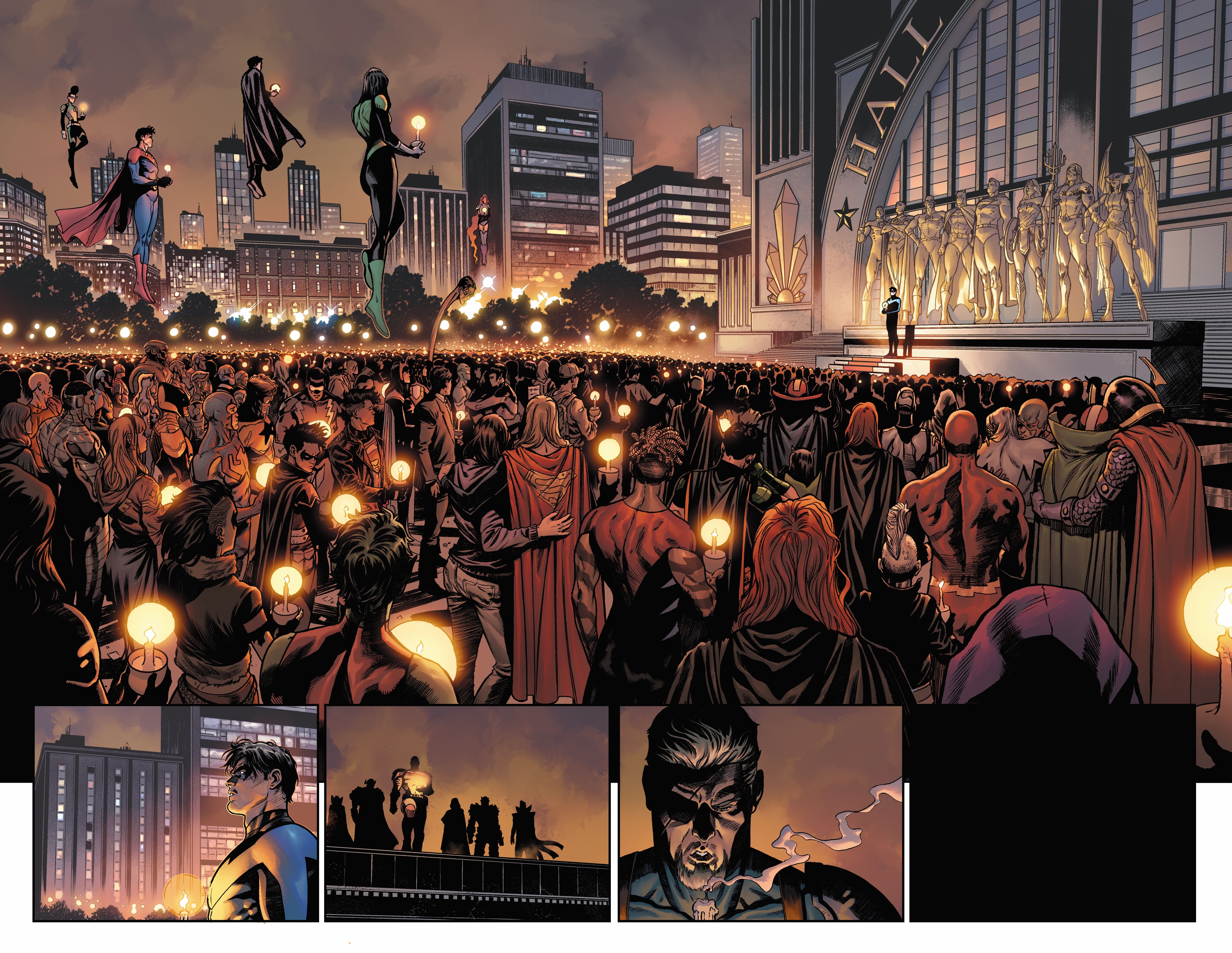DC Comics kicked off 2021 with a look at the DC Universe's possible destiny in its Future State event. Depicting alternate futures where the classic heroes were replaced by a new generation of younger superheroes after a cataclysmic incident, Future State gave way to the Infinite Frontier era and its reborn multiverse. The culmination of Infinite Frontier is the upcoming crossover event Dark Crisis, helmed by writer Joshua Williamson and artist Daniel Sampere. The world is reeling from the death of the Justice League while the threat of the Great Darkness looms on the horizon. While many of the DCU's surviving heavy hitters battle for the fate of reality, Earth finds itself falling prey to a familiar foe in Deathstroke.
In an exclusive interview with CBR, Williamson and Sampere tease the intimate and emotional approach to the battle for the multiverse. They reflect on how Dark Crisis serves as the payoff from months of comic book storytelling in the DCU and share some of the influences behind the upcoming event. Also included is the cover from May's Dark Crisis #0 FCBD Special Edition and Justice League: Road to Dark Crisis #1 and unlettered preview art from June's Dark Crisis #1, drawn by Sampere and colored by Alejandro Sanchez.
CBR: Way back during Future State, Jesse Chambers hinted at a cataclysmic incident that brought them to Earth-11 before deciding to stay in the DCU. Is Dark Crisis a version of that reality-sundering event?
Joshua Williamson: We'll see. [laughs] Sam, you know me. You know that I'm obsessed with continuity and making sure that everything connects. I think people will be surprised by how much we dig into some of that stuff. Future State, at this point, has kind of become its own thing, but I would say that everything I write at DC is connected -- so that's my answer to that question. [laughs]
Is this the first time you two have worked together?
Williamson: I think so, but I've been following Daniel's work for a long time. I remember he did an annual that I worked on with Scott Snyder and James Tynion IV but I didn't actually write it. Daniel did this annual where it had the Justice League go to the Source Wall. I remember looking at it, thinking it was dope and this guy was nailing it. I looked at every page of that annual being jealous, thinking this guy should be doing books and he was so good. When it got brought up that Daniel was somebody to work with on this event, I was like, "Hell yeah!" I was looking at some of his other work in Future State and Action Comics and I knew this was the guy.
Daniel, after putting Superman to hell and back in the pages of Action Comics, how is tackling the entire DC Universe?
Daniel Sampere: First of all, it's scary. It feels like a challenge. Thankfully my career has allowed me to learn in a lot of different situations. In Injustice 2, I did that for two years and had the opportunity to work with a lot of characters. It was not on such a big scale [as Dark Crisis] but a lot of people were appearing constantly and I got used to all types of characters and studied them. During that time, I also worked very closely with Bruno Redondo and Tom Taylor, who paid special attention to the characters and story. It was like a dream. I've been doing fill-ins on many different books, like Justice League, Suicide Squad, or Wonder Woman, and I really like working on different things that make me feel comfortable in any situation I have to draw. It's a lot of work, but I feel like I can do it.
One of the loose ends coming out of Infinite Frontier was Darkseid and the Great Darkness, with the Great Darkness resurfacing in Justice League vs. Legion of Super-Heroes. How does the Great Darkness inform what happens in Justice League #75 and moving forward?
Williamson: I was talking to Brian Michael Bendis last August and, from the beginning, when we were talking about what Infinite Frontier would be as a whole, I was reading Crisis on Infinite Earths again. I had read it many, many times over the last five or six years but I went back and read page one. On page one, it said there was a Great Darkness and the Darkness screamed when the multiverse was created. Even just rereading that, it made me think of the Darkness again. I went back and read the Alan Moore issues of Swamp Thing that crossed over with it. It was four issues of what was happening to magic and Constantine while Crisis on Infinite Earths was happening because a cult was trying to take advantage of that situation to resurrect the Great Darkness.
I went and talked with James Tynion, Ram V, and Dan Watters, writers who were operating in spaces like that, and we started talking about the Great Darkness. Nobody had really used this and then I found out Bendis was using it in Legion to build to something so we gamed out a plan. What happens here takes place after Justice League vs. Legion of Super-Heroes, we build off some of the pieces he put down and we were able to take it in a whole new direction. Looking at the stuff with Pariah, the Great Darkness plays a major role but Pariah plays a larger role once we really start moving these pieces along.
By the time we get to Justice League #75 and Dark Crisis #1, it's really about Pariah manipulating the Great Darkness. It's such an interesting piece of DC mythology that people have kind of bounced around but haven't necessarily done anything with. We started having these conversations, wondering if it was time to do something with it but do something unexpected. That's why we ended up picking it.
The previews have revealed that Dark Crisis starts on a somber note, with all the surviving heroes mourning the Justice League. How is it balancing those raw emotions with the big scale?
Sampere: This is actually my favorite part of what we're doing with Dark Crisis because it feels very intimate but on a huge scale at the same time. Just finding the balance between both, I think, is the key to making the story awesome. Even if the action is crazy big or the scale of the moment is huge, I always try to add some touches to the characters that are the right emotions for them. I pay a lot of attention to the actions and emotions characters are feeling in a moment. In one of the pieces from the preview with all the heroes sad over the Justice League, I made them all crying and hugging each other, but I also reflect the emotions in the biggest moments. This is what connects readers with the story -- feelings, even in the biggest, crazy moments.
Williamson: That was one of the fun parts about this. I've seen a Crisis through Superman, Batman, and Wonder Woman's eyes. We've seen events like this. I wanted to show it from a different point of view. We were able to make it a bit more grounded, emotional and about the characters. Yeah, there's all these huge things happening all the time, but it's about those characters. That's why we're trying to show you a more intimate opening and show that this story is a bit more emotional. It's more about the characters than it is about a explosions.
You mentioned Pariah, the other major loose end coming off Infinite Frontier along with Barry Allen. A Crisis never has the best connotation if you're a Flash.
Williamson: The Flash Family plays a very important part in Dark Crisis. I think we're maybe two months too early to talk about that part, but once people see what's coming out in July, people will start to realize how some of these pieces connect. You'll notice the team that goes to confront the Dark Army doesn't actually have a Flash on it. Barry and Wally are not there. If you read Infinite Frontier, you know where Barry's at and that those parts are important. Barry plays a very important role once we get into the second half of the event -- you'll start to see how these pieces come together. Don't worry, the Flashes will be fine. [laughs] I'm not killing my boys, don't worry!
One shadowy figure we see at the vigil mourning the Justice League is Deathstroke. How does "Shadow War" set him up for Dark Crisis?
Williamson: The first page has Bruce Wayne and Dick Grayson doing the vow and oath in front of the candle and it cuts to the vigil and everyone's holding candles. Deathstroke is holding a candle, but he blows his candle out in that panel. You literally see him blow the candle out, and those candles represent legacy in the DCU. The moment we see the candle on page one, that's what this story is about -- it's about how legacy will endure through the darkness. The light of this candle represents the beginning of this legacy and the beginning of sidekicks and all these legacy pieces with that candle. When we see that shot of everyone holding the candles, we see Deathstroke blowing the candle out and then we go to black. That's me telling you a bit of what this story's about, what Deathstroke's doing, and what his motivations are right there visually in those two pages.
Infinite Frontier and Justice League Incarnate are taking care of the big, multiversal pieces of this conflict. They're the attack from above. The attack from the ground is coming from Deathstroke -- that's what "Shadow War" sets up. The heroes are going to handle that the Justice League has gone one way and the villains are going to handle it another. Some villains are going to take advantage of it. Deathstroke is one of those villains, but he has a very particular mission in mind with what he wants to do. I don't want to spoil what Deathstroke's mission is, what he sees as his moment, but the pieces where Deathstroke gets to that place, that's all set up in "Shadow War."
Daniel, as someone who's had the opportunity to draw much of the DCU before, what makes Dark Crisis so exciting for you?
Sampere: What excited me the most is the big scale and visual legacy DC has with Crises. I'm an especially huge fan of the first two Crises, and having a chance to use those images for my own art, like the multiple Earths -- it's so recognizable and iconic that it feels like a new level for the art I can do. It's like a dream I had when I was a teenager, to be a comic book artist. I read all those books. Now, I'm drawing one of them and it feels much bigger than anything I've been done before. Sometimes when I'm working on it, it feels unreal.
Williamson: Daniel and I talk very frequently, I'd say at least twice a week. Without getting into spoilers, Issue #2 is really one long fight scene --there's a lot of things that happen, but it's a big battle. I told Daniel what was coming ahead of time. We talk up the story and he knows what we're pitching, all the big beats, so when he gets the script, it's not a surprise. We're able to go back-and-forth but the scripts are still fairly detailed and, because there are so many characters, we have to keep lists and reference folders. Trying to keep everything straight is its own challenge, but Daniel and I work really closely. I've probably never worked with someone as closely as I have with Daniel, outside of my creator-owned stuff.
Sampere: Me either! I had a very close relationship with Phillip Kennedy Johnson on Action Comics, but this time I'm working with a writer on so much content because the story we're working on needs it. There's so much to take care of and talk about that we need to chat often, with all the characters and details that we're doing.
Tonally, it reminds me of Superman: Panic in the Sky!, with Batman leading the fight on the ground while Superman leads the heroes against Warworld -- though this feels much bigger.
Williamson: This is much bigger, but I do love Panic in the Sky! and I really looked at past events like Crisis on Infinite Earths, Infinite Crisis, Panic in the Sky!, Zero Hour, and Blackest Night. We went and looked at all these big events, and the key was how do we do it differently? That's what we've been working on, how to show it from a different point of view. That was a really big piece in doing a Crisis like we've never seen before. This is a much more emotional and intimate peek at a Crisis event, but it's still going to get bigger and bigger. It starts to escalate more and more. I'm eventually going to drive Daniel crazy with the amount of characters I fit on every page, that's my goal. [laughs]
Written by Joshua Williamson and drawn by Daniel Sampere, Dark Crisis #1 goes on sale this June from DC Comics. Dark Crisis #0 FCBD Special Edition will be available May 7 as part of DC's Free Comic Book Day promotion.





